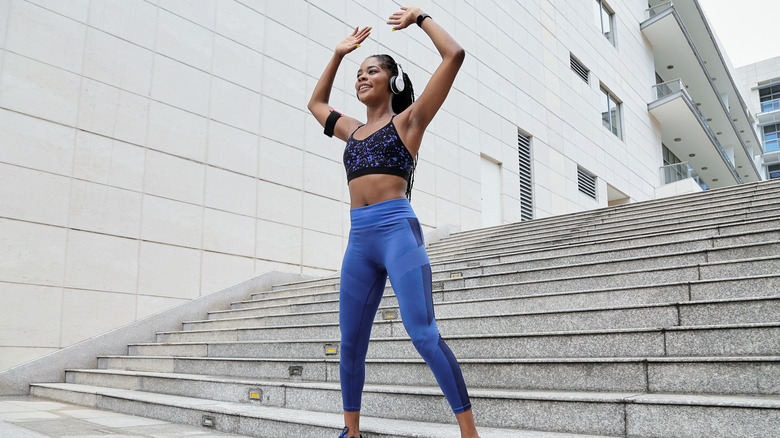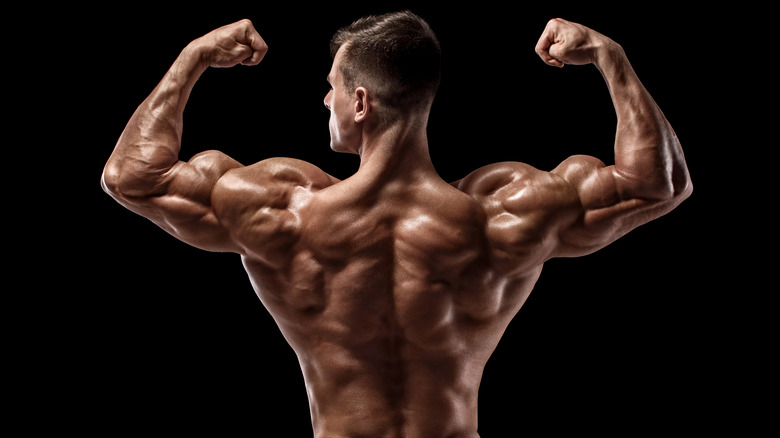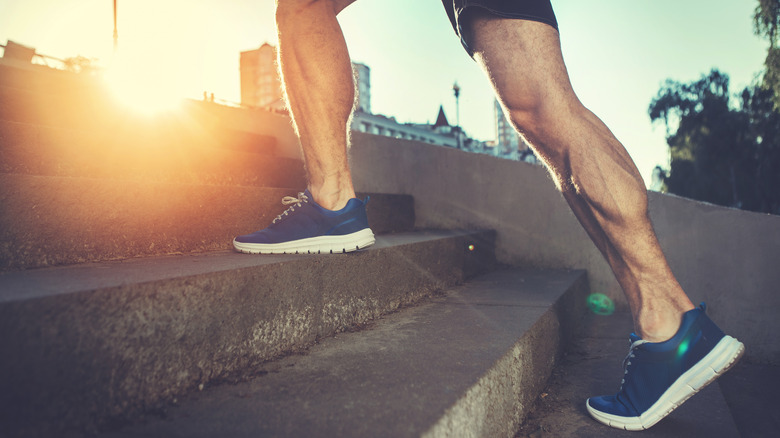What Muscles Are You Working When Doing Jumping Jacks?
Jumping jacks are often one of the first exercises we learn to do as tiny tots, bursting with energy, in P.E. class. As children, practicing jumping jacks helped us to develop coordination, bilateral motor skills, and body awareness while improving our physical fitness (per Frances Xavier Warde School). Not to mention how fun and free it felt — flailing our arms and legs around, attempting our very best 'flying starfish' impressions.
Some of us may have abandoned jumping jacks in our adult lives, opting instead for flashier and more intricate exercises. Regardless, the quiet effectiveness of the jumping jack remains the same. Insider explains that jumping jacks are an excellent example of plyometrics; a category of forceful aerobic exercises designed to exert maximum effort in short bursts.
They increase heart rate which can improve cardiovascular health, may strengthen bones, and they provide an equipment-free, full body strength and conditioning workout. You may be wondering, "Full body, huh? Well, what muscles am I working when I do jumping jacks?" Let's take a closer look.
Upper body muscles for jumping jacks
While you'd probably be pretty quick to name jumping jacks as a cardio move, the idea of it being a good upper body exercise might give you reason to pause. However, The Manual notes that jumping jacks employ nearly every major muscle in the body — including the arms, shoulders, chest, back, and abs. Livestrong explains that when we move our arms away from our bodies and arc them overhead, we activate the deltoid (the muscle that forms the rounded contour of our shoulder) as well as the superior muscle in the rotator cuff. The upper chest, back, and arms all come together via the shoulder adductors as we move our arms back down to the body. This engages the teres major and latissimus dorsi in the back, both pectoralis major muscles in the chest, the triceps, and the muscle on the inside of your upper arm called the coracobrachialis.
The upper body benefits don't stop there. When we perform most physical activities, our core is the silent hero, stabilizing our movements (per Livestrong). The core also works during jumping jacks. The abs, obliques, hip flexors, and lower back all work together to provide balance as we jump this way and that.
Lower body muscles involved in jumping jacks
When it comes to jumping jacks, the lower body gets its fair share of exercise, too. The gluteus medius muscle does most of the heavy lifting as we spread our legs apart for a jumping jack, and the gluteus minimus comes in with the assist (per Livestrong). These are the muscles that make up the glutes, or the buttocks. The hip adductors on the inside of the hip joint (the adductor brevis, adductor longus, adductor magnus and gracilis) join forces to bring your legs back together.
Keaton Ray, trainer and co-founder of MovementX physical therapy, said when speaking with Women's Health, that when we do jumping jacks, the relatively small muscles that make up our calves and ankles are doing the most — propelling the body up when we jump and providing stability for the legs when we land. Livestrong notes that during jumping jacks, the calf contracts every time you jump and every time you touch down. So, if you add some jumping jacks into your workout today, don't be surprised if you can feel it in your calves tomorrow.



